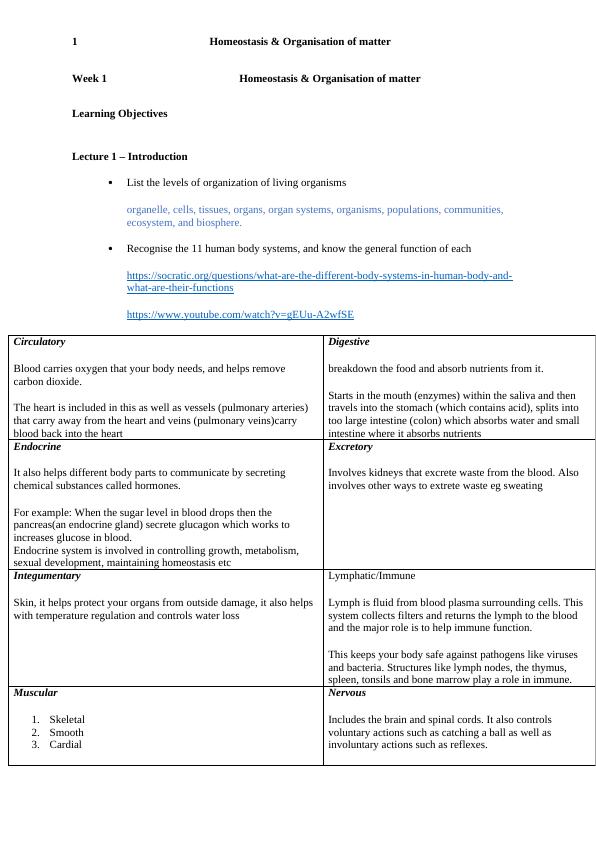Homeostasis & Organisation of matter
7 Pages1320 Words277 Views
Western Sydney University
Human Body Systems (EDU0SC2)
Added on 2023-05-02
About This Document
In this report we will discuss about homeostasis & organisation of matterand below are the summaries point:-
- Blood carries oxygen and removes carbon dioxide.
- Includes the heart, pulmonary arteries, and pulmonary veins.
- Breaks down food and absorbs nutrients.
- Starts in the mouth with enzymes in saliva and travels to the stomach and small and large intestines.
- Secretes hormones to help body parts communicate
- Controls growth, metabolism, sexual development, and homeostasis
- Pancreas does not produce insulin
- Cells cannot take in glucose for cellular respiration
- Type 1 diabetics need insulin and blood sugar monitoring.
- Collects, filters, and returns lymph to blood
- Helps immune function and protects against pathogens
- Physiologic parameter values drift outside normal ranges
- May lead to diseases or death.
Homeostasis & Organisation of matter
Western Sydney University
Human Body Systems (EDU0SC2)
Added on 2023-05-02
ShareRelated Documents
End of preview
Want to access all the pages? Upload your documents or become a member.
Report on Principles for Health and Social Care
|16
|5368
|107
Physiological Principles for Health and Social Care
|17
|5840
|91
Biology Assignment
|11
|2722
|240
System Organs
|3
|562
|83
BIOL121 Cell Biology Assignment (doc)
|10
|2078
|167
CHC33015 Healthy body Functions Research 2022
|8
|1558
|30



